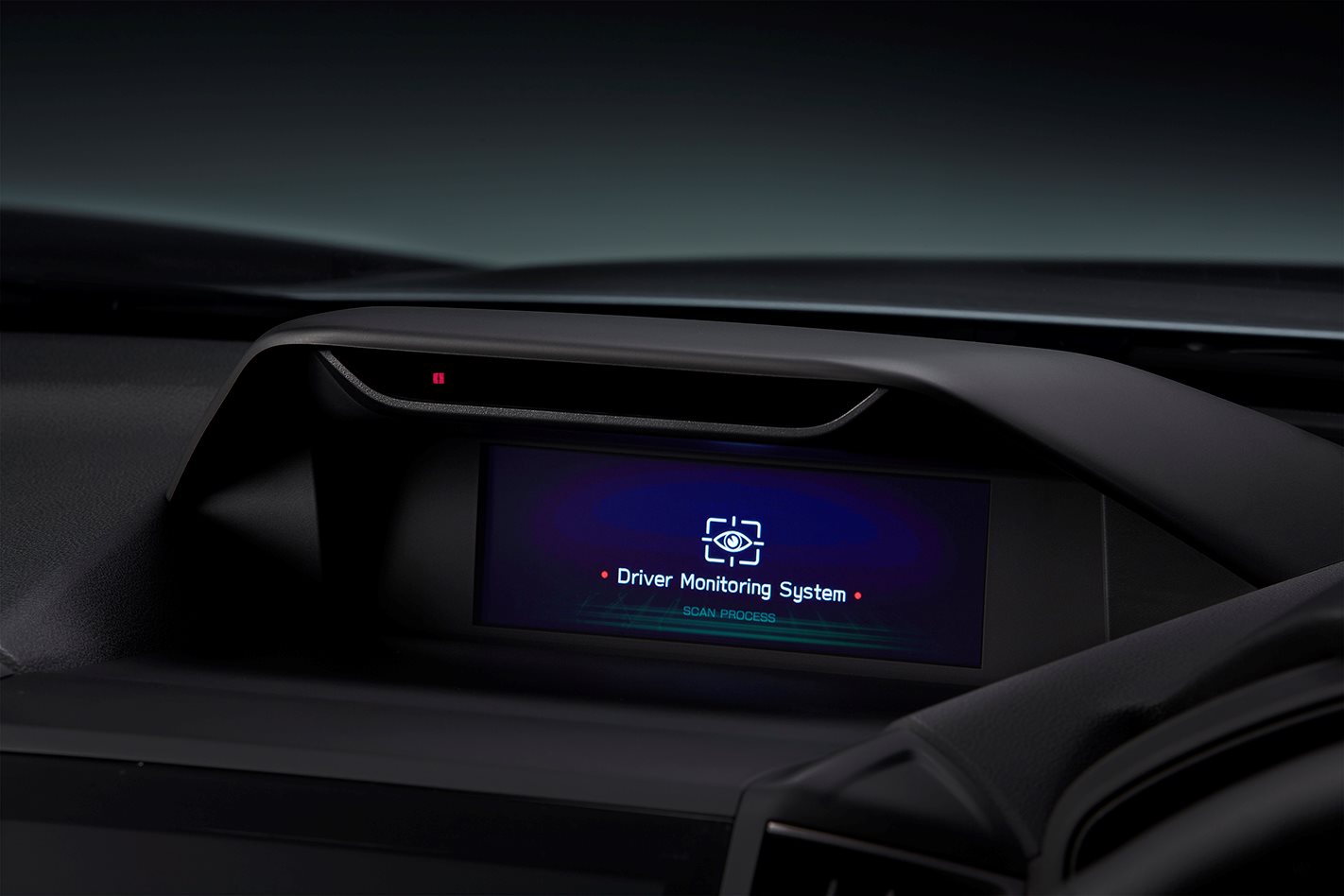
One of the lesser-known of Subaru’s array of advanced safety features is its Driver Monitoring System, which debuted in 2018 in the latest generation Forester.
The infrared camera-based system, which Subaru says is the first to appear in a mainstream model, continuously scans the driver for signs of drowsiness or distraction.
If the camera, located under the binnacle of the Subaru Forester’s centre-mounted multi-function display unit (MFD), detects signs of fatigue or sees the driver’s eyes facing away from the road for too long, a warning sounds and illuminates in both the instrument cluster and the MFD to refocus the driver’s attention.

In the range-topping Forester 2.5i-S, the Driver Monitoring System (DMS) is also used to recognise the faces of different drivers and automatically set predetermined preferences such as seating position, door-mirror angles, air-conditioning settings, and trip computer info. It even greets you once it has completed its facial scan.
In the future, Subar’s DMS can even be used for other applications such as vehicle security, though Subaru is being naturally coy about what it has in the pipeline.
But it’s DMS’ driver distraction element that is the most significant, with driver distraction, particularly the use of personal devices while driving, now one of the leading causes of vehicle accidents.
This works by detecting if the driver continues to face in a direction other than straight ahead. If you think you can fool it by keeping your head pointing straight but flicking your eyes down or to the side, than don’t – it detects that too.
The dozing/drowsiness recognition is equally clever, and can provide an earlier warning than other systems that mostly work by analysing erratic steering inputs.
Subaru Australia engineer Hiep Bui told WhichCar the system gets used to the driver’s blinking pattern and can recognise when they’re start to close their eyes more frequently or for longer periods.
If you don’t like the thought of being monitored by your car you can switch DMS off. However Bui believed most drivers would appreciate having it looking out for them should their concentration lapse.
This relatively new technology does have some limitations. In order to work effectively, the DMS requires an unimpeded view of the driver’s face that can be reduced or completely blocked by a face covering or hat casting shade. And while the infrared camera can see through glasses, it can be affected by reflections or dark or polarised sunglasses.
Bui said DMS isn’t too dissimilar to smartphone facial recognition technology, which centres on security and personalisation.
“DMS personalises right now. It can set your seats and climate control, but in the future it might be that it will recognise you and start the car so you don’t need a key anymore.
He stressed that, while personalisation is a big part of future tech, it would be speculation to discuss where it will lead as far as automotive applications are concerned – which is a coded way of saying he can’t tell us about future projects.
So can it one day be used as ID to electronically pay for fuel, change the mood in the cabin based on how it thinks you’re feeling, or tell of someone is intoxicated simply by scanning their eyes?
“Obviously we will develop what the market demands,” Bui responded with a straight bat.




